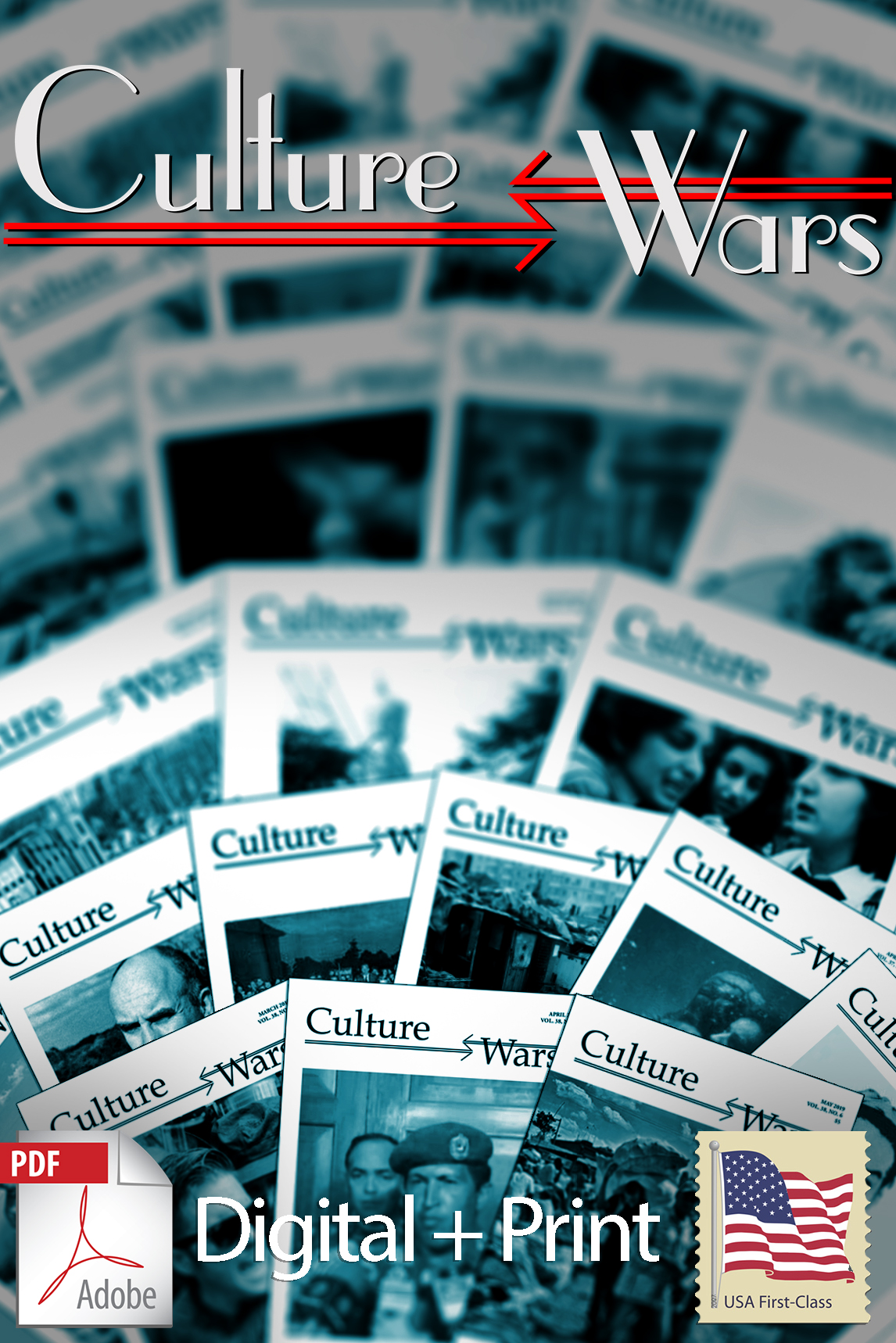The Holocaust Narrative
The Holocaust Narrative
If you don’t wish to pay using PayPal on our website please phone us at 1-574-289-9786 and we’ll take your credit card order personally. Please call between 9am-5pm EST Monday-Friday. You may also send an order with a check as payment. Please mail:
Fidelity Press, 206 Marquette Ave., South Bend, IN 46617
Thank you for your understanding,
-Ruth Jones and Culture Wars Staff
Holocaust refers to being burnt whole. Elie Wiesel writes in Night that Jews were killed in flaming pits. We don’t hear about that anymore, do we? The term “Holocaust” originated in the ’70s from an American TV series. My wife was teaching in public schools, and a Jewish colleague, who would criticize my wife for wearing a crucifix, suddenly came to school wearing a badge that said, “We are all Zionists now.” The Holocaust story is the creation of a series of narratives that began with Allied and Hollywood propaganda campaigns in WWII to cover war crimes committed by Eisenhower and the Soviet Union, including Eisenhower’s Rheinwiesenlager and the fire storms engineered to burn alive entire populations of German and Japanese civilians.
The Holocaust Narrative brings me back to my roots in literary criticism, where I determine the stories’ origins and purpose. I am examining literary artifacts, among them Anne Frank’s diary, William Styron’s Sophie’s Choice, and Jerzy Kosinski’s Painted Bird, and examining how the narrative changed over time. Steven Spielberg, for example, had water coming out of the showers in Schindler’s List. Is Spielberg a Holocaust denier or was he acknowledging that the Germans were meticulous about hygiene and had the highest level of modern hygiene in the world? As early as 1910, the Germans shaved the heads, showered, and fumigated the clothes of the Jews who reached their border in order to save their lives and prevent the typhus epidemics that inevitably occurred along their migratory path from the shtetls in the Pale of the Settlement.
There were many imaginative descriptions of what happened that had to get formalized into a coherent narrative, and that was never accomplished. When the stories that make up the narrative can no longer be defended as factual, discussion about the Holocaust is criminalized. And that is where we find ourselves today.
- E. Michael Jones
608 Pages.
Reviews
In the 1990s, Norman Finkelstein critiqued the Holocaust Industry, which was built on those who did not suffer in the Holocaust and yet sought social, political, and financial gain from it. Jones’ book examines that industry from the standpoint of literary criticism, highlighting and exposing the false narratives of that industry. This book is necessary reading for anyone interested in an honest dialogue about the use and abuse of historical tragedies.
- Rev. Jeffrey J. Langan, Ph.D
“Jewish Hollywood cast its spell. We are under the spell of Hollywood. This is going to be the book of the century. Fidelitypress.org, culturewars.com, that’s where you’ll get it, along with all of Mike’s other fantastic books.”
— Gemma O’Doherty
















